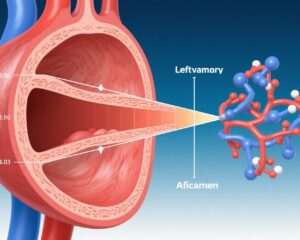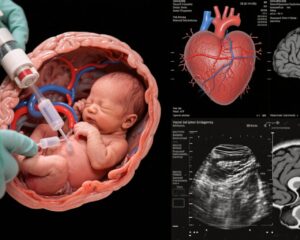Highlight
- Multidomain rehabilitation reduced cardiovascular death or unplanned cardiovascular hospitalization risk by 43% within one year compared to usual care in older adults post-MI.
- The intervention combined cardiovascular risk factor control, dietary counseling, and structured exercise training, tailored for patients aged 65 and older with impaired physical function.
- Median participant age was 80 years, highlighting feasibility and benefit even in very elderly populations with multimorbidity.
- No serious adverse events were associated with the intervention, supporting its safety.
Study Background and Disease Burden
Myocardial infarction (MI) remains a leading cause of morbidity and mortality worldwide, with a particularly high burden in older populations. Patients aged 65 years and older often present with impaired physical performance post-MI, along with multiple comorbidities that complicate recovery and increase risk of recurrent cardiovascular events. Traditional cardiac rehabilitation programs have proven benefits in younger populations but their efficacy and safety in the elderly, especially those with functional impairment, remain less clear. This represents an important unmet clinical need, as older adults constitute a growing demographic with distinct physiological and psychosocial challenges.
Multidomain rehabilitation strategies—combining cardiovascular risk factor management, nutrition, and tailored exercise—hold theoretical promise to improve outcomes by addressing the multifactorial contributors to cardiovascular risk and physical decline. Yet robust randomized evidence in older adults with reduced functional status after MI is sparse.
Study Design
This multicenter, randomized controlled trial was conducted in Italy and involved 512 patients aged ≥65 years (median age 80), all of whom had impaired physical performance assessed 1 month post-MI. Patients were randomized in a 2:1 ratio to either a multidomain rehabilitation intervention or usual care.
The intervention comprised:
– Comprehensive control of cardiovascular risk factors (e.g., hypertension, dyslipidemia, diabetes)
– Dietary counseling emphasizing heart-healthy nutrition
– Structured exercise training adapted to patient capacity
Usual care followed standard post-MI management without this integrated rehabilitation program. The primary composite outcome was cardiovascular death or unplanned hospitalization for cardiovascular causes within 1 year.
Key Findings
Among the 512 randomized patients (342 intervention, 170 control), the intervention group experienced a significantly lower incidence of the primary outcome (12.6% vs. 20.6%; hazard ratio [HR], 0.57; 95% CI, 0.36 to 0.89; P=0.01). This represents a 43% relative risk reduction in cardiovascular death or unplanned cardiovascular hospitalization over 12 months.
Cardiovascular death alone occurred less frequently in the intervention group (4.1% vs. 5.9%), though this did not reach statistical significance (HR, 0.69; 95% CI, 0.31 to 1.55). Unplanned cardiovascular hospitalizations were significantly lower in the intervention group (9.1% vs. 17.6%; HR, 0.48; 95% CI, 0.29 to 0.79).
Importantly, no serious adverse events related to the rehabilitation intervention were reported, highlighting its safety even in a vulnerable elderly cohort. Subgroup analyses suggested consistent benefit across sexes and age strata.
The robust effect sizes and the consistency of risk reduction primarily in hospitalization suggest that the multidomain program may improve both survival and quality of life by reducing recurrent or decompensated cardiovascular events.
Expert Commentary
This landmark randomized trial addresses a critical gap in evidence for cardiac rehabilitation in older MI survivors who often face a clinical conundrum balancing intervention intensity and safety. The trial’s pragmatic design and comprehensive intervention provide strong support for integrating multidomain rehabilitation in routine post-MI care pathways for the elderly.
The biological plausibility stems from the combined targeting of modifiable risk factors, nutritional optimization, and physical conditioning—all pivotal in vascular health, cardiac function, and preventing frailty progression. Previous observational studies underscored the association between functional impairment and poor cardiovascular outcomes; this trial establishes a causative improvement pathway.
Limitations include the single-country setting and potential variability in usual care standards internationally, though the elderly median age and inclusion criteria enhance generalizability to typical clinical populations encountered globally.
Current guidelines may soon incorporate such multidomain programs as a recommended standard for older MI patients with impaired physical function, shifting the paradigm from unidimensional post-MI rehabilitation to holistic interventions.
Conclusion
The PIpELINe trial provides compelling evidence that a multidomain rehabilitation approach—combining cardiovascular risk factor control, dietary counseling, and exercise therapy—is both safe and effective in reducing cardiovascular death or unplanned cardiovascular hospitalizations among older adults with functional impairment following myocardial infarction. This intervention not only addresses the heightened risk profile in this population but also underscores the importance of comprehensive, tailored rehabilitation programs in improving post-MI outcomes. Incorporating such strategies into clinical practice could lead to substantive reductions in morbidity, healthcare utilization, and improve quality of life in this vulnerable subset of patients.
Future research should explore long-term sustainability of benefits, cost-effectiveness, and integration of psychosocial and cognitive support domains to further optimize recovery trajectories.
References
1. Tonet E, Raisi A, Zagnoni S, et al. Multidomain Rehabilitation for Older Patients with Myocardial Infarction. N Engl J Med. 2025;393(10):973-982. doi:10.1056/NEJMoa2502799.
2. Anderson L, Oldridge N, Thompson DR, et al. Exercise-based cardiac rehabilitation for coronary heart disease. Cochrane Database Syst Rev. 2016;1(1):CD001800.
3. Forman DE, Brawner CA. Cardiac Rehabilitation for Older Adults: Challenges and Opportunities. J Am Coll Cardiol. 2020;75(15):1757-1767.
4. Franco OH, de Laet C, Peeters A, et al. Effects of physical activity on life expectancy with cardiovascular disease. Arch Intern Med. 2005;165(20):2355-2360.



